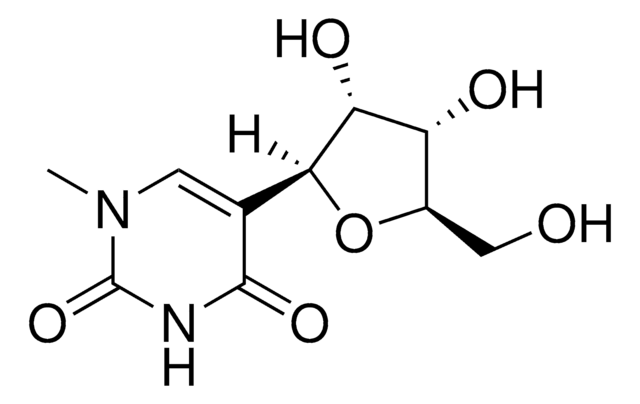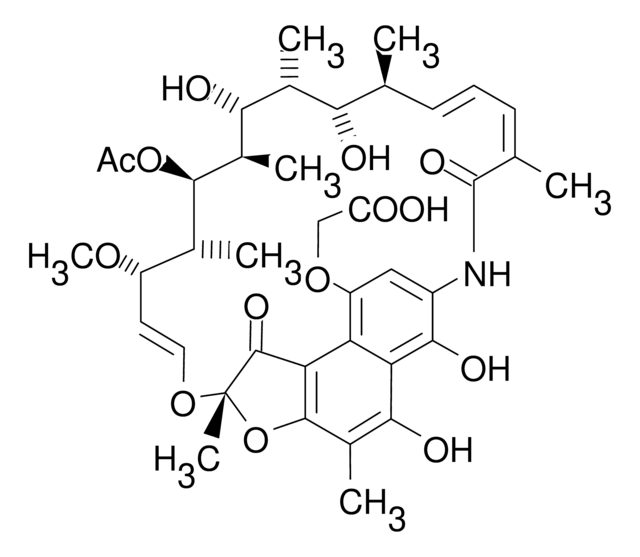SMB00912
Pseudouridine
≥98% (HPLC)
Sinónimos:
Pseudouridine, β-Pseudouridine, ψ-Uridine, 5-(β-D-Ribofuranosyl)uracil
About This Item
Productos recomendados
biological source
synthetic (chemical)
Quality Level
assay
≥98% (HPLC)
form
powder
mol wt
244.2
color
white to off-white
mp
222 °C ((432 °F ))
solubility
water: soluble
storage temp.
2-8°C
InChI
1S/C9H12N2O6/c12-2-4-5(13)6(14)7(17-4)3-1-10-9(16)11-8(3)15/h1,4-7,12-14H,2H2,(H2,10,11,15,16)/t4-,5-,6-,7+/m1/s1
InChI key
PTJWIQPHWPFNBW-GBNDHIKLSA-N
Categorías relacionadas
General description
Application
Features and Benefits
- High-purity compound suitable for a wide variety of research applications
Other Notes
Storage Class
13 - Non Combustible Solids
wgk_germany
WGK 3
flash_point_f
Not applicable
flash_point_c
Not applicable
Certificados de análisis (COA)
Busque Certificados de análisis (COA) introduciendo el número de lote del producto. Los números de lote se encuentran en la etiqueta del producto después de las palabras «Lot» o «Batch»
¿Ya tiene este producto?
Encuentre la documentación para los productos que ha comprado recientemente en la Biblioteca de documentos.
Nuestro equipo de científicos tiene experiencia en todas las áreas de investigación: Ciencias de la vida, Ciencia de los materiales, Síntesis química, Cromatografía, Analítica y muchas otras.
Póngase en contacto con el Servicio técnico







